We’re now several months into the global response to the COVID-19 pandemic, with most parts of the world falling somewhere on the lockdown/social distancing/opening up path.
It’s fair to say now that while the medical emergency has not passed, the level of knowledge about it has changed significantly. When communities were fighting to slow the initial spead, the focus was on solving the problem of medical protection gear and other equipment shortages at all costs with some interesting yet possibly hazardous solutions. Now the focus has moved towards protecting the general public when they do need to venture out, and as society learns to get life moving again with safety measures in place.
So, we all need masks of some sort. What type to do you need? Is one type better than another? And how do we all get them when everyone suddenly needs what was once a somewhat niche item?
Masks Offer Basic Protection for Everyone in Public Areas
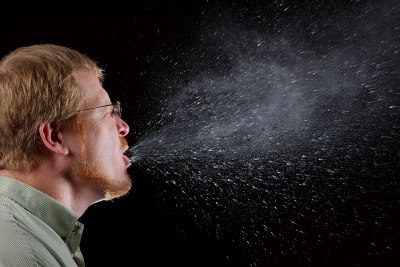
Some parts of the world are coming to terms with the effects of long term lockdown, while others are beginning to contemplate how they might start moving back towards some kind of normality. The issue of mask wearing a practical one, because there are indications that it will slow the spread of the disease.
When considering face masks, it’s important to start by defining what a mask for the general public should be, and what it is trying to achieve. This is not the same breed as the masks worn by intensive care staff where the primary intention is to protect the wearer by filtering the virus from an atmosphere heavily contaminated with it, instead it is a mask intended to be worn in environments where only a few people may be spreading the virus (with the pesky detail of not knowing who those few people are).
The goal of masks is to reduce the chances of transmission by infected droplets. It’s an idea wittily illustrated in the “Urine Test” meme, that such a mask will not guarantee your escape from the virus but it should significantly reduce the odds of its transmission. We’re told that these odds tilt further against the virus the more people in an environment wear a mask, and since it’s a relatively easy step to take it’s one that everyone should be taking as a courtesy to your fellow humans.
We’re Makers, Yes… But You Can Learn a Lot From Commercial Masks
In our community the first thought turns invariably towards making our own and indeed that’s part of the official advice in many territories, but before we go there it’s worth considering the commercial alternatives. These normally use a composite design featuring multiple layers of fabric for comfort and filtration, with the main filter layer(s) being of a blown fabric rather than a woven one.
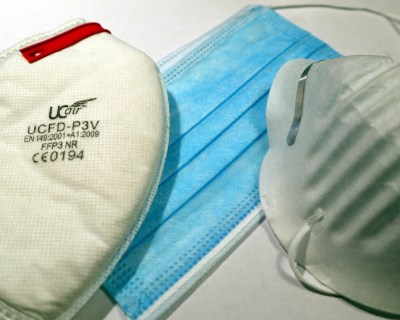
If you have a supply of the top-spec medical masks then you’re all set, but since pandemic demand has caused a supply shortage that’s a luxury most of us can’t claim and shouldn’t be taking from the professionals who need them anyway. We will often have an array of other masks to hand as dust protection in the workshop, and among these can be found some surprisingly good protection for our application. The key is in the rating which should be printed on the box or the outside of the mask, but to decode what it means will sometimes require a bit of digging into the world of international standards.
Assuming that you didn’t buy from the cheapest seller on AliExpress and your mask isn’t counterfeit, you may encounter US standards (N95 etc), EU standards (EN149, FFP etc.), or Chinese standards (T3210-2016 etc.). These deal among other properties with the mask’s particulate filtration ability both in terms of particle size and percentage removal, and with the breathing force required to make air pass through them. Happily our requirement for a droplet-catcher does not require the most stringent of standards. As an aside, the official versions of all the above mentioned standards seem all to be behind very expensive paywalls. It’s not difficult to find them online through your search engine though.
Tearing Down Some Masks
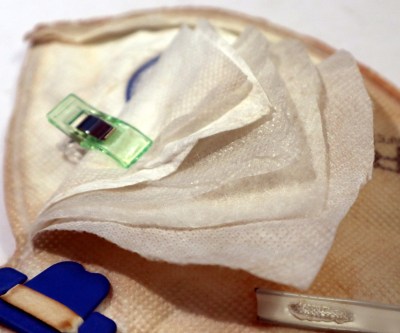
So casting around the commercial masks we have to hand here brings out a pair of dust masks and a surgical style mask that admirably illustrate the range on offer. An FFP3 dust mask is a European-rated rough equivalent of those N95 surgical masks in industrial form, and it feels thick between finger and thumb. Despite having probably the best available filtration, our FFP3 is not suitable as virus protection because it manages exhalation through a non-return valve that would release droplets into the atmosphere.
Taking the used FFP3 mask from my overall pocket that has protected me from dust during several woodwork machining sessions at MK Makerspace and cutting it open, it is revealed as having five non-woven layers including a thick and fluffy one and a very dense one. When compressed with a micrometer screw gauge its thickness is a relatively substantial 0.94mm.
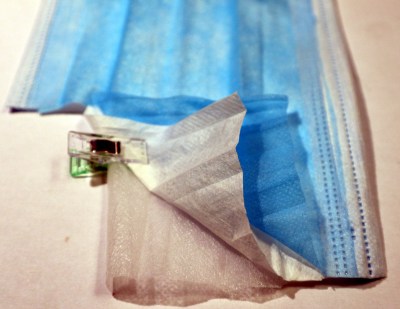
The next mask up for dissection is a Chinese-manufactured three-layer surgical mask with T3210-2016 spec, whose box clearly states that it isn’t a medical device. That warning sounds concerning but in this case it isn’t; masks to that particular standard are intended to be worn by the general public and not by medical staff. In fact this mask is purpose-made as everyday-life dust and droplet-catching PPE, so is just the job. Cutting it open reveals three layers with the middle filter layer being a dense non-woven fabric, and the micrometer reveals it to have a svelte 0.28mm compressed thickness.
The final mask is another dust mask, a Silverline single-layer mask from a pack I bought for showing people round a dusty church tower. It’s a single layer of 0.45mm thick stiff blown-polymer fabric moulded into a mask shape, and its packaging has the ominous warning that it does not offer rated protection to the wearer. It was very cheap indeed and just about adequate for the purpose I bought it for, but I have to admit I’d be happier with more than its very basic level of protection during the pandemic.
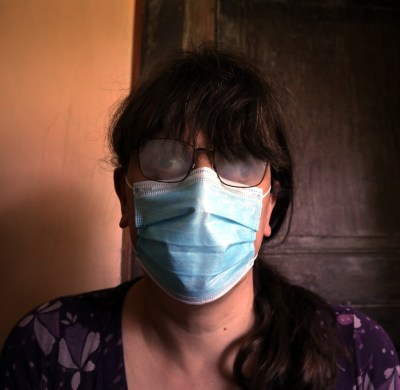
All three masks feature a piece of stiff wire or metal strip above the nose designed to fit the contours of the bridge of the nose and clamp shut any gaps through which breath can escape. It’s easy to tell whether they are effective if you wear glasses, because they will immediately steam up if damp air from your breath escapes. Of the three it was the disposable surgical-style mask that did the worst job of this, the FFP3 had a very sturdy plastic and wire tape that lets nothing through and the cheap unrated mask has a metal strip, but the surgical-style mask’s single piece of thin wire simply isn’t up to the job.
I’ve worn all three for extended periods of time to test them, and while driving into town for a prescription wearing this one I had to stop and take it off as the risk of not seeing where I was going became too great. This can be mitigated with folded-up kitchen towel to plug the gaps or even medical tape to secure it, but such things rapidly become very annoying.
As for the fogging, there is some advice out there for this as well. Using dish soap that does not have lotion in it, or say that it’s for sensitive skin will work. Apply to the inside of the lens, let sit a bit, then buff it until clear. The same is said to work with shaving cream although I’ve yet to try either method.
Freedom To Be Uninfected
What’s to be gained from this insight into masks and their construction? In the first instance, it pays to be educated and informed when finding a mask for yourself. Over the past few months I’ve been offered the chance to buy masks from everyone from my PCB supplier through the local tool shop to my stationery provider, alongside any number of unsolicited emails. It’s a confusing marketplace with traps for the unwary that with luck will have become a little clearer.
In the next part of this series I will look at home made mask design and demonstrate how I have made masks of my own. Dust off your sewing machine, that article will be out next week.

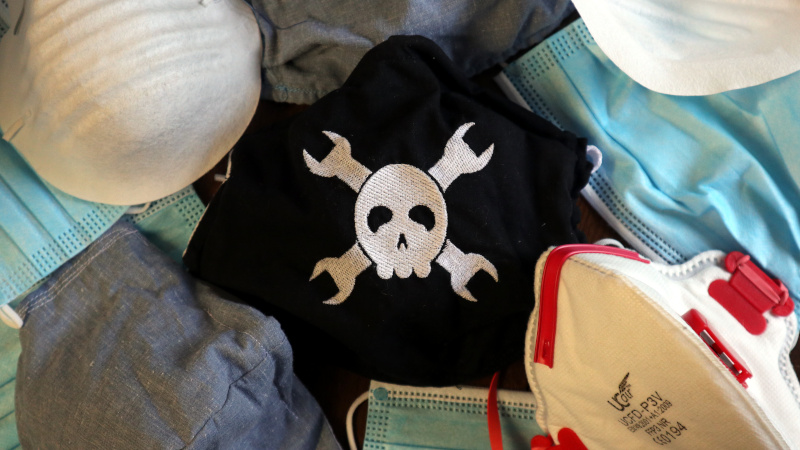














Good write up Jenny. In fact your problem is one I keep colliding with. No matter what style I wear I have to take the time to clean my specs. And it gets worse with the ones that are largely used out there. Incidentally points are available for the best photo taken. And you’ve won all of them.
You might want to look at some of the products available for Ski-Goggles. Fogging isn’t a recent issue. Best product I’ve used is “cat crap” anti-fog lens cleaner.
I read “very cheap urinated single layer mask”
Maybe it had to do with the Reddit link.😁
At the swimming pool, we use simple spit to reduce fogging. Not sure how effective it is in more dry environments. I now know that if there’s fogging, the mask isn’t well adjusted .
The key for a mask to work seems to be static electricity. I have read that reusing or washing a mask reduces its ability to catch germs because the fabric loses its static electricty. My question is: is there a way to generate static electricity with a direct current? Maybe it is possible to make a battery powered mask that does not need to be reused indefinitely.
I think that only applies to N95 masks which use an electrostatically charged layer to help attract and bind particles that are smaller than the size the mask’s filtering fabric can block.
The key for a mask to work seems to be static electricity. I have read that reusing or washing a mask reduces its ability to catch germs because the fabric loses its static electricty. My question is: is there a way to generate static electricity with a direct current? Maybe it is possible to make a battery powered mask that does not need to be reused indefinitely.
Have you tried scooting across the carpet in sock?
Have you tried carving a Bane mask out of amber and motorboating your cat?
Is that why all the socks are stuck to the sweaters in the dryer, because we’ve washed the static electricity out of them?
I think that only applies to N95 masks which use an electrostatically charged layer to help attract and bind particles that are smaller than the size the mask’s filtering fabric can block.
swine flu is from USA so good luck with that
Back in 1976 when the Swine Flu hit the U.S., I didn’t see people walking around in public with dust masks on their faces.
I think there is no more or less chance of the virus being present wherever it comes form.
More on nose wires in part 2
I am using AWG18 magnetic wire for the nose bridge. While it is very good at maintaining shapes, it get a bit annoying making marks om face. I think those plastic strips for resealable cookies might be the best for the nose wire. The ones I got have embedded wires on both edges of the plastic strip. The wide plastic strip helps to redistribute the force and probably easier for stitching.
I am surprised no one has come up with a closed captioning mask using speech to text to a LCD mask for people who are hard of hearing
Just make ’em buy a Oneplus 8 phone to lipread you through the mask.
It’s sort of like franchising, create a need/problem and then sell the solution.
“An FFP3 dust mask is a European-rated rough equivalent of those N95”
Er, FFP3 is 99% blocking of particles, FFP2 is 94% so actually FFP3 is equivalent to N99 and FFP2 is closest to N95.
(I wonder if it’s because the FFP3 is just a lot more common so what people went to when people read about N95 masks, not that it’s equivalent)
That’s what I thought too
Huh? Then why are certain Latin American countries running out of supplies and space? And you can guess what the sapce problem is.
The WHO says you don’t need one and shouldn’t wear one. Are you banned on FB/Twitter/YT yet?
This is only partially correct. If you are going to spread information, please make sure it is the _correct_ information. From the WHO guidelines on “When and how to use a mask” :
• If you are healthy, you only need to wear a mask if you are taking care of a person with COVID-19.
• Wear a mask if you are coughing or sneezing.
Source: https://www.who.int/emergencies/diseases/novel-coronavirus-2019/advice-for-public/when-and-how-to-use-masks
Keep in mind, also, that the WHO is a global body and needs to cater their message for a much wider audience than, say, the CDC in the US, who might have different guidelines for their country/community.
You can get ffp3 masks without the valve, the best of both worlds, apart from more resistance than a p2
My wife made us two masks out of old cotton pillowcases according to a plan on a website which includes an area for inserting a nose bridge wire. Since I’ve found this to be the Achilles heel of masks in the past due to fogging of glasses, and a poor seal generally, I suggested that she use 4-wire solid ribbon cable instead of a single aluminum strip. It works really well, holds its shape better than the single wide strip of aluminum that I’ve used in commercial masks.
Next time we make masks, we’ll use material that’s a little more permeable to air flow, because I sing in public while keeping a 6 foot distance between the band members, and 10 feet from the public. The singing isn’t hard, although getting enough air when I take a breath between phrases is challenging. But it is doable if I just hold the mike closer and turn up my microphone input a bit more than usual. Although I’d judge that it reduces clarity by about 5%, people seemed to be impressed that it worked at all, and were very receptive to our efforts.
Cheers!
I was thinking some kind of “cyclone” system could be adapted to help filter particles and droplets out of exhaled air. Sort of a passive Dyson system, in a little cylinder attached to a mask’s vent port, with a disinfectant-soaked removable collecting sponge at the bottom.
I’m not sure if such a system is possible using only the energy of the exhaled breath, without an additional source of air flow. If that’s required it would complicate things. Maybe a small fan that turns on when you exhale, and blows air into the cyclone cylinder.
I use N95 masks with exhalation valves. I put a piece of tape over the valve inside the mask.
Late to the party here, but re: glasses fogging up: I’ve spent a considerable amount of time working in surgical departments over the years, and in the gowning area there are always boxes of at least two different kinds of surgical masks – one regular, and one for eyeglass wearers. They’re pretty much identical except for an extra plastic strip on the eyeglass version. It was a thin film, probably polyethylene, that was about a centimeter wide and attached to the top of the mask over the moldable nosepiece. The important part was that the film was only attached to the top of the mask, leaving a pocket to catch exhaled water vapor. It did a great job of stopping the fogging.
“fog-free” surgical masks use a small strip of foam along the top margin. I’ll link to an example. Its not the exact model I use for surgery but pretty close. This is very effective but seems to work better with head tied type vs ear loop masks;probably something to do with the vector force of the ties.
https://www.medsmart.co/products/fluid-sheild-mask-mask/halyard/halyard-fluidshield-fog-free-surgical-mask-(48247)/pid-14614647.aspx